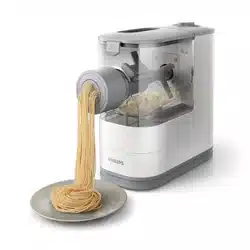Documents: Go to download!
User Manual
- User Manual - (English, French, Spanish)
- Recipe Booklet - English, Spanish, French - (English)
- Specification - (English)
- Quick Start Guide
- Overview
- Disassembling and cleaning before first use
- Assembling
- Using the pasta maker
- Storage
- Troubleshooting
Table of contents
User manual Pasta and Noodle Maker
Quick Start Guide
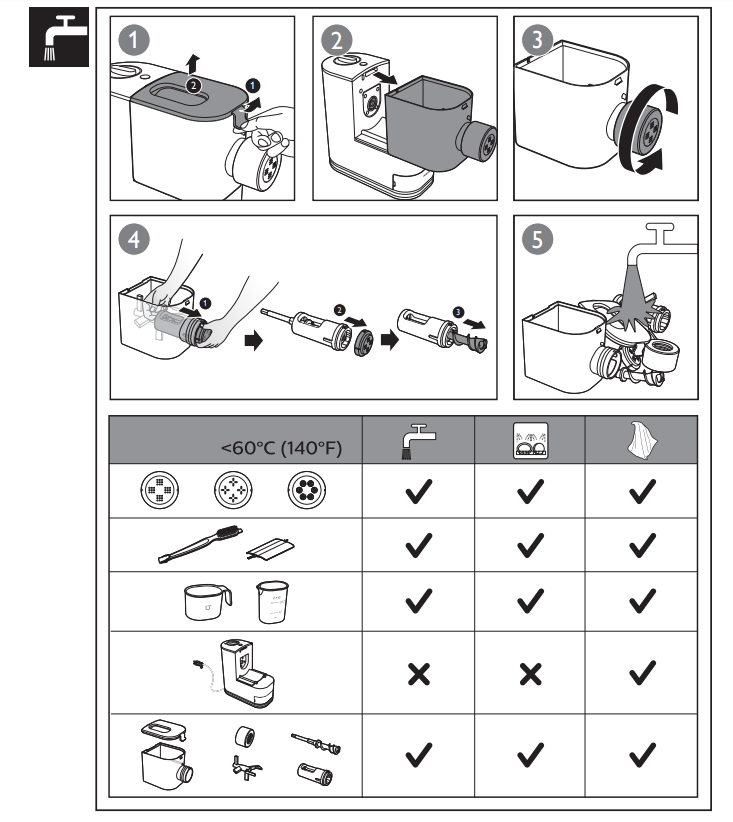


Overview


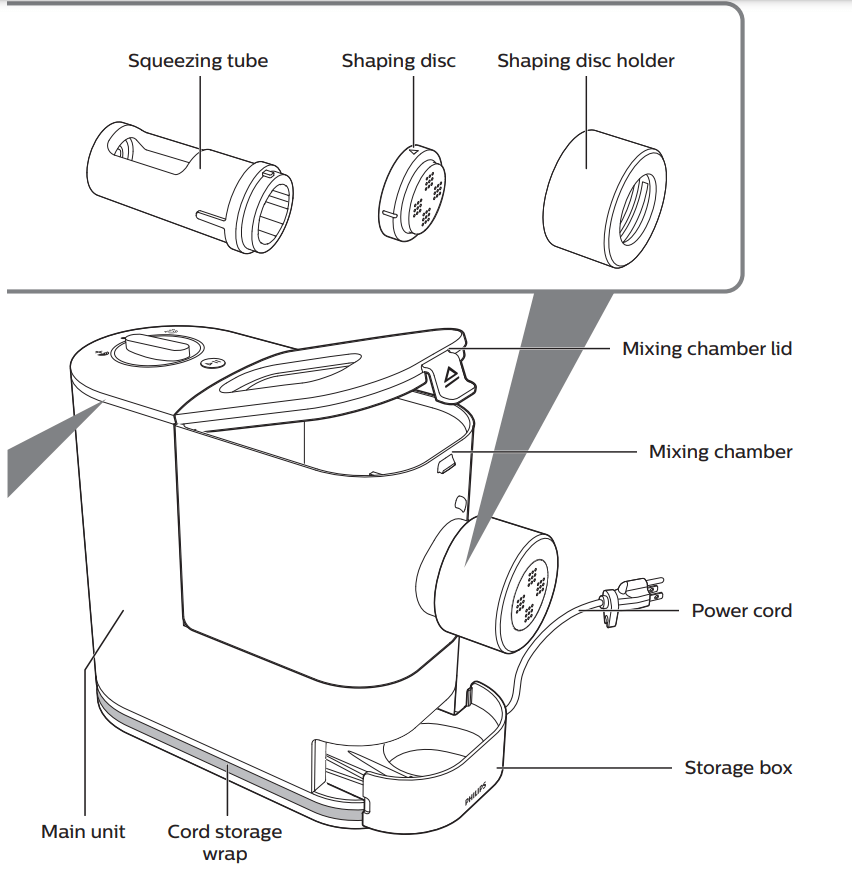
Disassembling and cleaning before first use
Important
- Before using the appliance for the first time, remove and safely discard any packing material and /or promotional labels.
- Take out all parts and accessories, wash and thoroughly dry all parts and accessories (refer to the chapter "Cleaning").
- Do not use water to rinse or soak the main unit, the power cord, and the power plug.
- Do not use a scouring pad or similar cleaners as these will scratch the plastic surface and affect the lifetime of the pasta maker.
- The shaping discs and all detachable parts of the appliance are dishwasher safe. When you clean them in a dishwasher, make sure to select the proper program which has a maximum temperature at no higher than 60°C (140°F).
- This appliance is intended for household use only
1. 1 Pull the lid to unlock it and then 2 remove the lid from the mixing chamber.
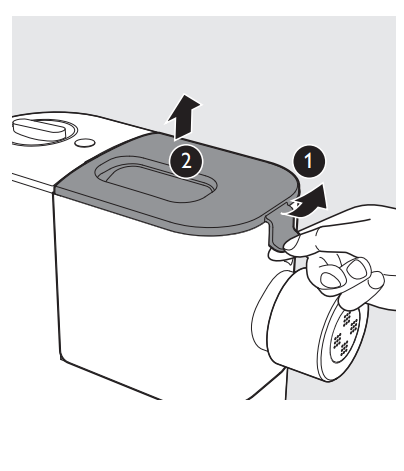
2. Slide the mixing chamber off the main unit.
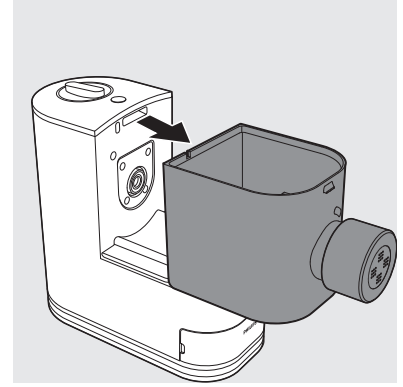
3. Turn the shaping disc holder counterclockwise to remove it from the mixing chamber outlet.
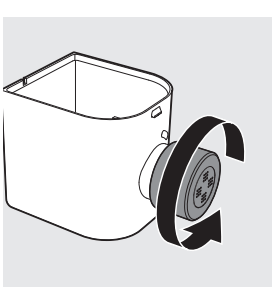
4. 1 Put your finger in the mixing chamber and push the squeezing tube outwards to slide it out of the mixing chamber outlet. 2 Detach the shaping disc, and then 3 pull the squeezing bar out of the squeezing tube.

5. Take the mixing paddle out of the mixing chamber.

6. Clean all detachable parts and accessories, and then wipe them dry.
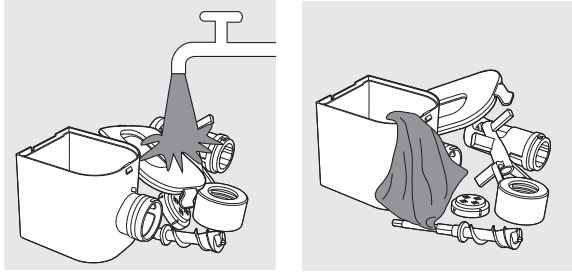
Assembling
Follow below assembling steps to install the pasta maker.
Important: Make sure the appliance is not plugged in during assembly.
- Slide the mixing chamber onto the main unit.
Note: Make sure the fixing levers on the main unit are fitted with the openings on the bottom of the mixing chamber.

2. Put the mixing paddle in the mixing chamber as shown in the illustration.
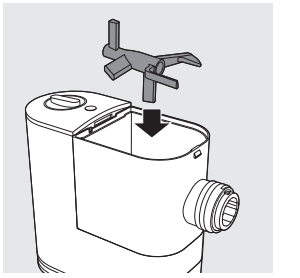
3. Insert the squeezing tube into the mixing chamber
Note: Make sure the big opening on the squeezing tube faces up when you insert the tube into the chamber.
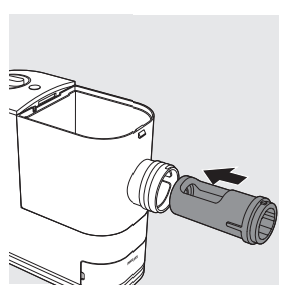
4. Insert the squeezing bar into the mixing chamber. Make sure the squeezing bar slides all the way through both the squeezing tube and the mixing paddle and into the shaft in the main unit.
Note: Slightly turn the mixing paddle to make sure the squeezing bar is connected correctly with the shaft 1 in the main unit.
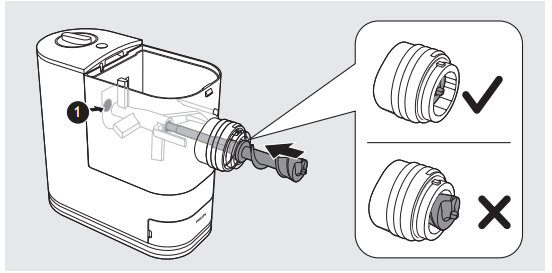
5. Attach the shaping disc on the mixing chamber outlet.
Note:
- Make sure the flat side of the shaping disc is facing out.
- Make sure the shaping disc fits into the fixing point on the squeezing bar.
- Make sure the arrow on the shaping disc face upwards when you attach it on the mixing chamber outlet.
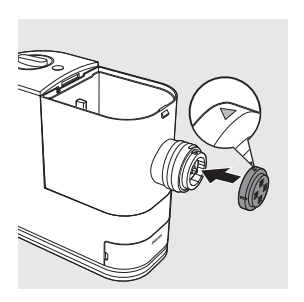
6. 1 Press the shaping disc through the opening of the shaping disc holder, and then assemble the holder on the mixing chamber outlet. 2 Turn the holder clockwise to firmly lock it in place.
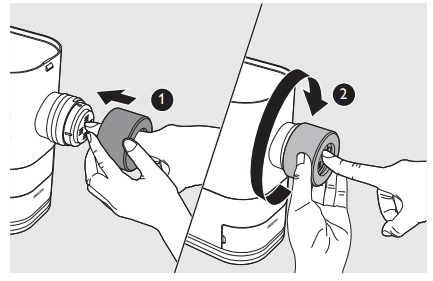
Always attach the shaping disc on the mixing chamber outlet before you assemble the shaping disc holder. Never put the shaping disc in the shaping disc holder and assemble them on the mixing chamber outlet at the same time.
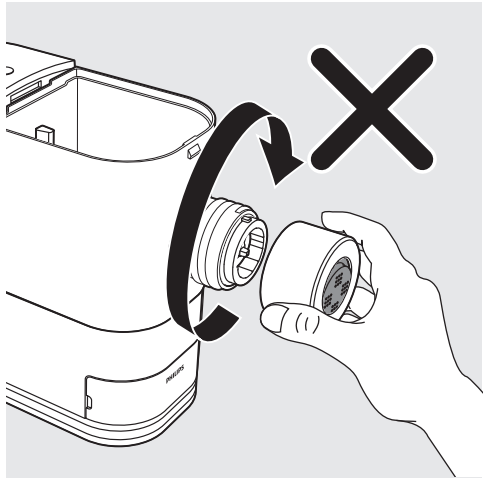
7. Attach the lid onto the mixing chamber.
Note: If the mixing chamber lid is not properly installed, the safety switch will prevent the appliance from working.
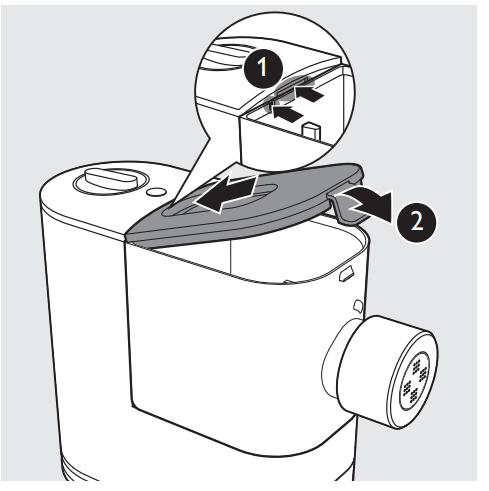
Using the pasta maker
Important
- Place the product on a flat surface and prevent table shaking or vibration.
- Make sure all the parts are well assembled before plugging in.
- Do not put less than 200g (1 flour cup) or more than 400g (2 flour cups) of flour in the chamber.
- Pour in the liquid slowly through the water slot after the appliance starts kneading.
- If you want to dispose of the weighed flour before processing with the next batch, empty the chamber and restart the appliance by unplugging and plugging in again.
- Do not put any ingredients that are 60°C / 140°F or above into the pasta maker, or place the pasta maker in surroundings at high temperature (60°C / 140°F), for instance in a high temperature sterilization environment. This will deform the appliance.
- Never pour water into the mixing chamber before you place the chamber lid onto the chamber.
- Make sure the shaping disc and shaping disc holder are assembled properly before plugging in the appliance.
Preparing the ingredients
1. Put the plug of the appliance into the power outlet. The pasta maker will sound once.
Note: Make sure all the parts are well assembled before plugging in.
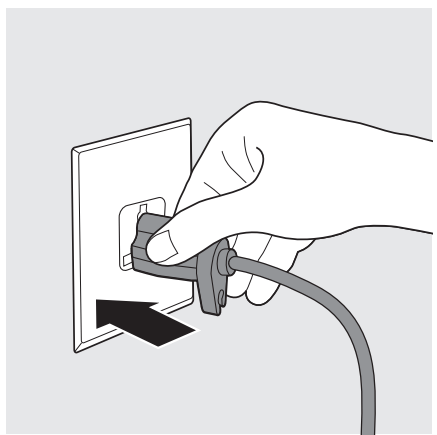
2. 1 Pull the lid to unlock it and then 2 remove the lid from the mixing chamber
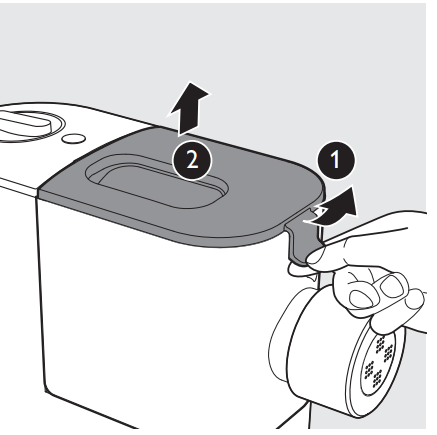
3. Scoop one full cup of flour using the flour cup. Scrape off any excessive flour from the cup edge with the supplied flat cleaning tool. One full cup of flour weighs around 200 grams, and is equivalent to 1-2 servings..
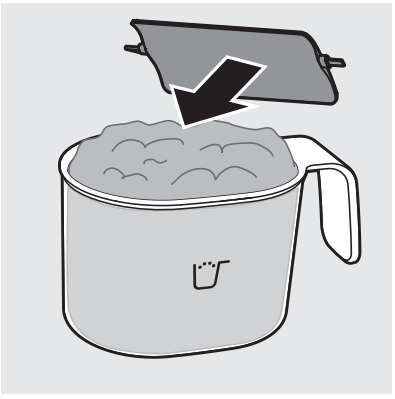
Note:
- Do not shake or hit the flour cup to remove excessive flour. This will affect the flour weight.
- Use a kitchen scale to measure the weight more accurately
4. Pour the flour into the chamber. If you want to make 2-3 servings, add a second cup of flour as you will need 2 cups (~400g) of flour in total

Note:
- Do not put less than 200g or more than 400g of flour in the chamber. If you put too little or too much flour in the chamber, the appliance will not operate.
- Do not pour the flour into the opening of the squeezing tube, otherwise the flour in the squeezing tube will not be mixed evenly

5. Attach the lid onto the mixing chamber.
Note: The appliance will not start working if the chamber lid is not properly closed. During the pasta making process, if the chamber lid becomes loose, the appliance will automatically stop working.
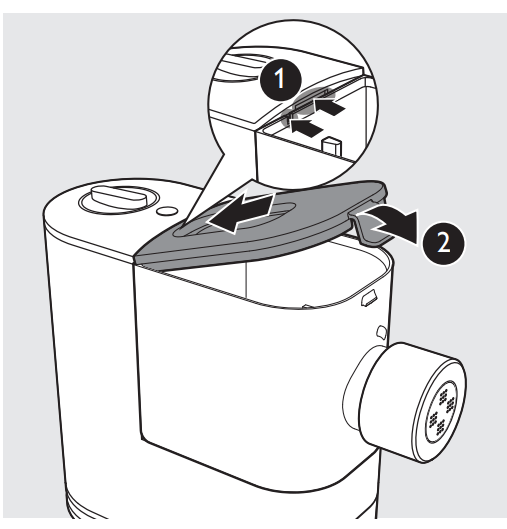
6. Refer to the section “Water and flour ratio” and measure the required amount of water or egg mixture with the supplied water cup.
Note:
- Do not pour water into the mixing chamber before the pasta maker starts running.
- Make sure to measure the liquid volume at eye level on a flat surface.
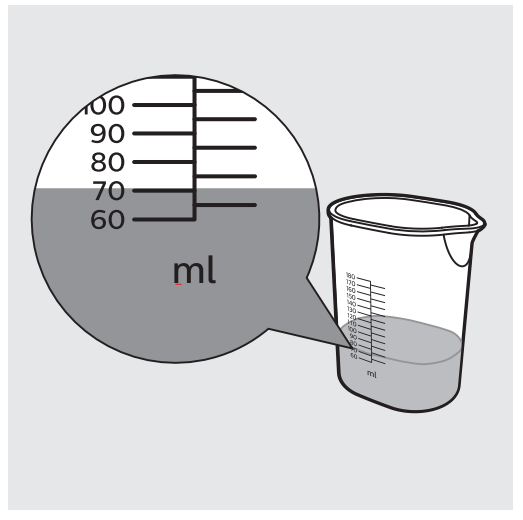
There are 2 sets of water markings on the supplied water cup.
Side A with two liquid levels is only designed for normal pasta (all-purpose flour mixed with egg mixture), which is the most popular pasta.
- 200 g (1 supplied cup) all-purpose flour + 80 ml egg mixture (including 1 egg).
- 400 g (2 supplied cups) all-purpose flour + 160 ml egg mixture (including 2 eggs).
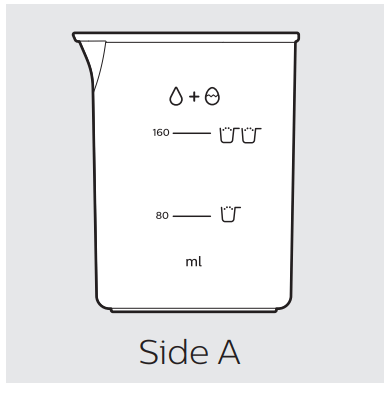
Side B with specific volumes is for other pasta.
- All-purpose flour mixed with pure water/ veggie juice mixture.
- Various other flours (as specified in the table below) with egg mixture/ pure water/ veggie juice mixture, etc.

Check the following table for detailed water and flour ratio.
Water and flour ratio
Note: This table provides the flour-liquid ratio base on 200 g of flour. When using 400 g of flour to make pasta, double the liquid volume (including egg) to get the right flour-liquid ratio.
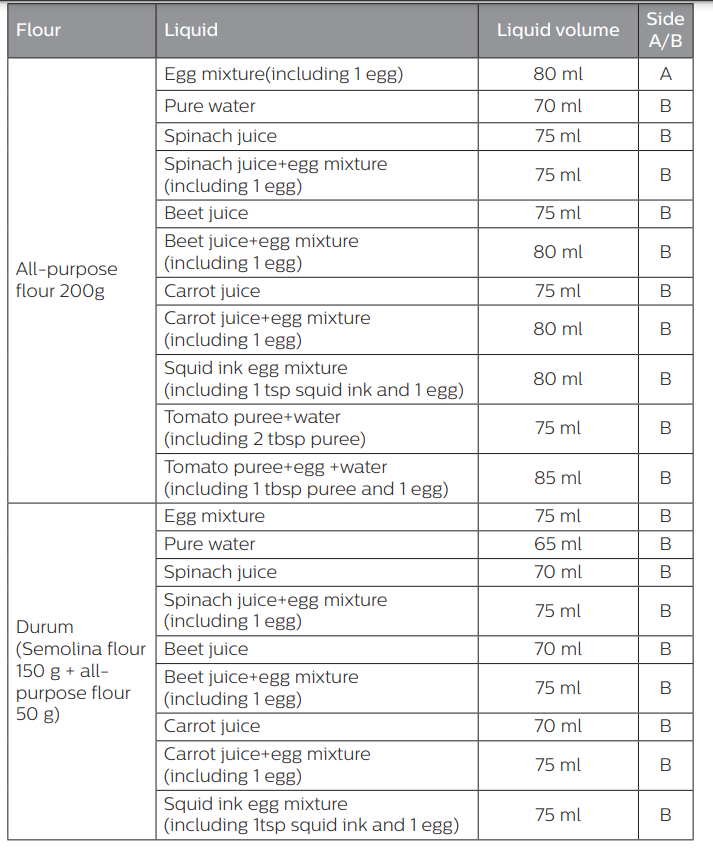
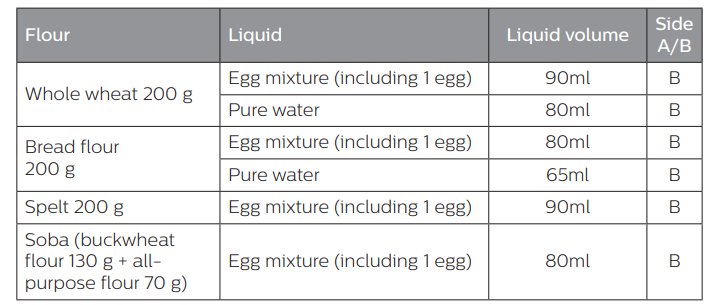
Important
- The flour cup included with the pasta maker is not a standard 8 oz. measuring cup and should not be used as such.
- The pasta recipes provided in the recipe book have been tested for success. If you experiment with or use other pasta recipes, the flour and water/egg ratios will need to be adjusted to the flour and water cup ratios included with the pasta maker. The pasta maker will not operate successfully without adjusting the new recipe accordingly
Note:
- To ensure the quality of the pasta, use gluten flour to make pasta; add the recommended liquid proportion.
- Seasonal changes and using ingredients from different regions may affect the flour/water ratio.
- When making egg pastas or vegetable pastas follow these steps:
- Measure the egg and liquid to the recommended level.
- Whisk the mixture evenly before pouring it into the chamber through the slot in the lid.
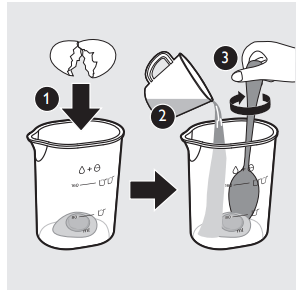
- See the recipe book provided for more delicious pasta ideas.
- When making the egg mixture, crack the egg into the water cup. Add water up to the required amount, and then whisk the water and egg to combine.
- When making the vegetable mixture, crack the egg into the water cup. Add vegetable juice up to the required amount, and then whisk the juice and egg to combine.
- “Gluten” is a binder which makes pasta not break as easily. Gluten-free flour contains no such binder, so it needs a thickener to act as the “binder”, such as Xanthan gum, Guar, etc. Various kinds of gluten-free flour perform differently when making pasta. Some flours are not suitable to make pasta such as coconut flour and white rice flour; some work favorably, such as quinoa, buckwheat, etc.
Starting the pasta making program
Important
- Do not select the extra extrusion program before the dough mixing is complete. Otherwise, this will damage the pasta maker and its lifetime.
- Do not disconnect the power cord before the processing is complete. If you have to stop the pasta making process, turn the control knob to "OFF" to stop the working process and then disconnect the power cord from outlet before performing other operations.
- To better protect the lifetime of the appliance, do not use the appliance continuously for more than 40 minutes. You can restart using the appliance after a 30-minute rest.
- If you intend to use the appliance continuously, clean each shaping disc with the supplied cleaning tool each time after the pasta making session. For easy cleaning, do not soak the shaping disc directly in water.
1. Turn the control knob to 1 select the automatic pasta making process, and then 2 press the Start/Pause button.
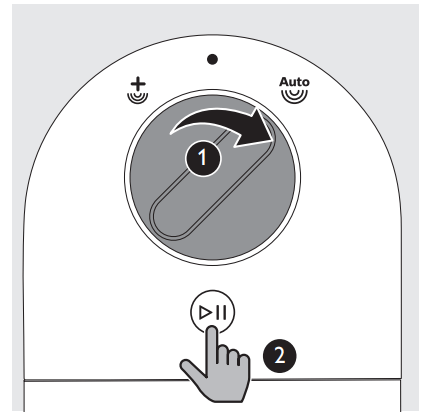
2. After the kneading starts, slowly pour in the liquid along the entire length of the slot in the lid.
Note: During dough mixing, do not add other ingredients after you have poured in the liquid. Otherwise, it will affect the results of the pasta texture.

3. After the pasta maker finishes kneading, it will beep a few times and the pasta extrusion will start after a few seconds. Place a container right under the outlet. Cut the pasta into the desired length with the cleaning tool.
Note:
- If the ratio of liquid and flour is not correct, the extrusion will not succeed. In this case, prepare the ingredients again.
- Move the cleaning tool downwards to cut the pasta.
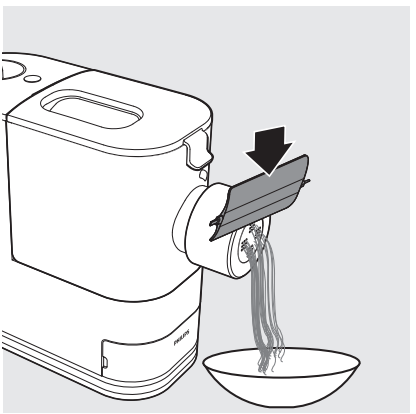
4. When the extrusion process is complete, the appliance will beep a few times.
Note:
- Do not turn the control knob to the “OFF” position before the whole process is over (you will hear the “beep” sound).
- The whole working process (including kneading and extruding) takes around 18 minutes for 400g of flour.
5. After the pasta making is complete, if you notice some leftover dough inside the chamber, you can 1 turn the control knob to the OFF position first, and then 2 turn the control knob to the extra-extrusion position. 3 Press the Start/Pause button to start the extra-extrusion program.
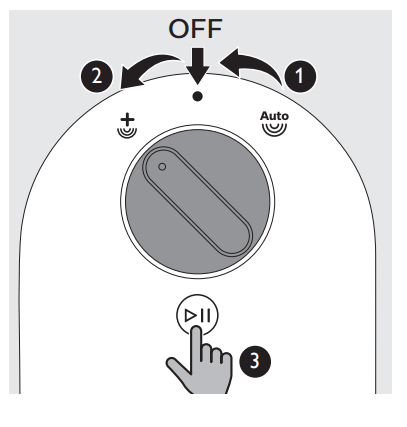
Note:
- You may find some fine pasta threads on the pasta surface. This is normal.
- The cooking time of the pasta varies depending on personal preferences, pasta shapes, and number of servings.
Cleaning
Important
- Turn the control knob to "OFF", disconnect the power and remove the power cord before cleaning or disassembling this appliance.
- Do not immerse the main unit in water.
- Do not use a scouring pad, caustic cleaners, or abrasive cleaners (for examples, gasoline, alcohol, and propanol) to clean the appliance.
- Clean the appliance each time after use, or the appliance might not operate properly.
- Take extra caution when cleaning the appliance to avoid getting cut by any sharp edges.
- The shaping discs and all detachable parts of the appliance are dishwasher safe. When you clean them in a dishwasher, make sure to select the proper program which has a maximum temperature at no higher than 60°C (140°F).
1. Turn the control knob to "OFF" and disconnect the plug from the power outlet.

2. 1 Pull the lid to unlock it and then 2 remove the lid from the mixing chamber.
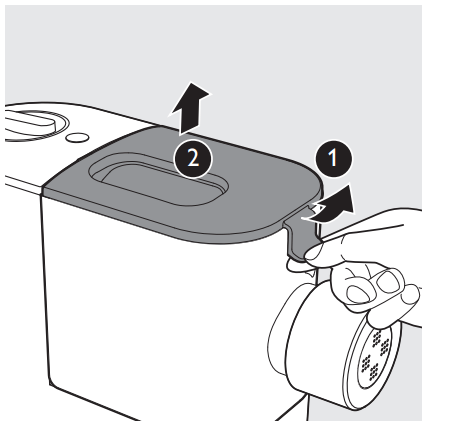
3. Slide the mixing chamber off the main unit.
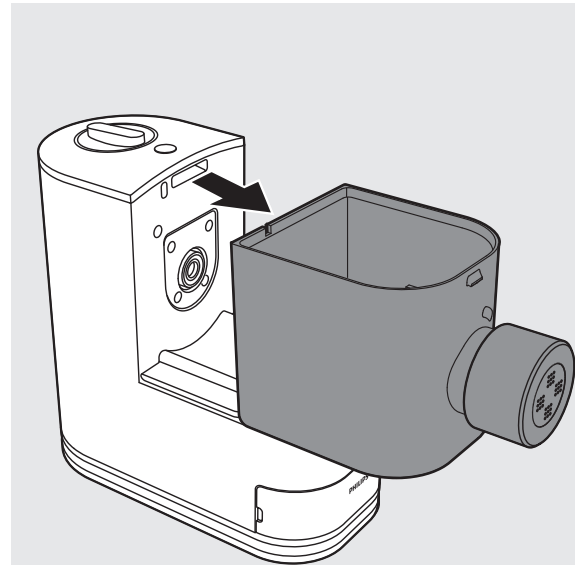
4. Turn the shaping disc holder counterclockwise to remove it from the mixing chamber outlet.

5. 1 Put your finger in the mixing chamber and push the squeezing tube outwards to slide it out of the mixing chamber outlet. 2 Detach the shaping disc, and then 3 pull the squeezing bar out of the squeezing tube.
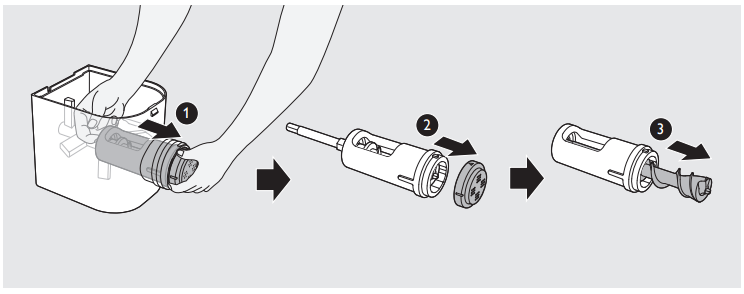
6. Take the mixing paddle out of the mixing chamber.

7. Clean the shaping disc with the supplied cleaning tool to remove the dough residues. After that, you can clean it with water.
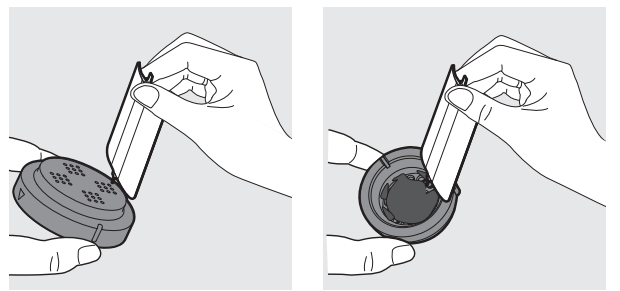
8. Use the supplied cleaning brush to clean all detachable parts with dishwashing liquid and warm water or clean in the dishwasher. Wipe all parts dry
Tip: Use the pointing end of the cleaning brush to clean the inner bottom of the squeezing tube.
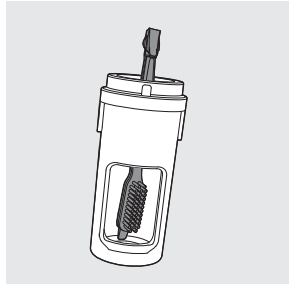
9. Use a dry cloth to clean the main unit, control knob, and the exterior of the pasta maker.
Note: After cleaning, make sure all parts and the shaping disc air dry thoroughly before storing. Assemble the pasta maker back for next use.
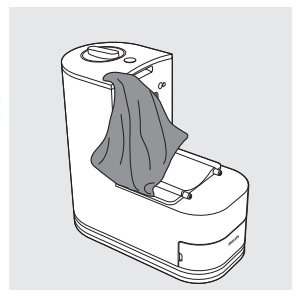
This appliance has no other user-serviceable parts. For assistance in the U.S. or Canada only call 1-866-309-8817.
Storage
1. Set the power cord in the clip on the power plug and wind the power cord around the cord storage wrap.
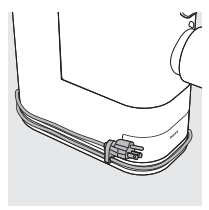
2. Dry the shaping discs and store them in the storage box.
The small groove in the storage box is designed for the cleaning tool of the angel hair shaping disc, which is not included in this pasta maker. They will be launched and sold separately.
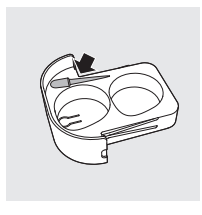
3. Store the pasta maker in a dry, well ventilated place after use.
Troubleshooting
- The appliance does not sound after the plug is put in the wall outlet.
- The plug is not connected properly, or the outlet is not connected to power source. Check whether the power plug is plugged correctly and the outlet is working properly
2. The appliance does not start the pasta making process after the plug is put in the wall outlet
- You have not chosen a pasta making program or pressed the start button
 . Choose a pasta making program and press the start button
. Choose a pasta making program and press the start button  .
.
3. After pressing the start button  , the appliance makes alarm sounds and does not work.
, the appliance makes alarm sounds and does not work.
- The chamber lid is not assembled properly. Make sure you follow the user manual to assemble the chamber lid properly.
4. The chamber lid is pushed open from the inside.
- There’s too much flour in the mixing chamber. The maximum amount of flour for each batch is 400g. If you have put more than 400g of flour in the mixing chamber, reduce the amount and make another batch of pasta.
- The ratio of flour and water provided in the "Flour/water ratio table" was not followed. The dough is too wet. Disconnect from the power source, clean the pasta maker, and follow the user manual again to restart the pasta making.
- The chamber lid is not assembled properly. Make sure you follow the user manual to assemble the chamber lid properly
5. During the pasta making process, the appliance stops working, and there is no alarm sound.
- The pasta maker has overheated due to long and continuous working time. Disconnect from the power source, and allow the pasta maker to cool down. To better protect the lifetime of the appliance, the continuous working time should be less than 40 minutes. You can use the appliance again after 30 minutes of rest.
6. During the pasta making process, the appliance stops working, and makes alarm sounds
- The ratio of flour and water provided in the "Flour/water ratio table" was not followed. The dough may be too dry.
- The mixing paddle may be blocked by some foreign objects.
- The wrong program is selected. Disconnect from the power source, clean the pasta maker, and follow the user manual again to restart the pasta making
7. The mixing paddle is running idle, and there is no pasta coming out.
- The ratio of the flour and water is incorrect. Disconnect the plug from the power source and discard dough. Clean the pasta maker, measure ingredients correctly (use a kitchen scale to measure the flour weight more accurately), and follow the user manual again to restart the pasta making
- The flour becomes damp after longtime storage. Use flour that is fresh or properly stored.
8. The pasta breaks easily.
- The ratio of the flour and water is incorrect. Disconnect the plug from the power source and discard dough. Clean the pasta maker, measure ingredients correctly (use a kitchen scale to measure the flour weight more accurately), and follow the user manual again to restart the pasta making.
- You did not use the correct type of flour. Use all-purpose flour or flour with higher protein content (refer to the chapter 'Using the pasta maker' in the user manual or the supplied recipe book).
9. The pasta sticks together.
- The ratio of the flour and water is incorrect, too much water is poured in the mixing chamber. Measure flour and water with the provided flour and water cup and according to the "flour/ water ratio table". Use a kitchen scale to measure the flour weight more accurately
10. Too much leftover dough inside the chamber.
- The flour is either exposed to moisture before use, or the dough is too wet. Keep your flour dry during storage. Follow the user manual instructions to restart the pasta making.
- The chamber, the mixing paddle, the shaping disc are not cleaned properly before use. Make sure all parts are clean before use.
- The mixing paddle or the chamber is still wet. Make sure all parts are completely dry before use.
- Water is not added in the right order. The flour type is not suitable. Follow the user manual instructions to make pasta
11. Small amount of water is leaking out from the appliance.
- Water is added before the program starts. Follow the user manual instructions to add water right after the program starts.
12. After pasta making, the squeezing tube cannot be pushed out of the mixing chamber.
The appliance is stopped during extrusion before the pasta making process is finished completely.
- Restore the disassembled parts back in place until the appliance is assembled properly, and turn the control knob to the OFF position.
- Plug in, select the automatic pasta making program, and press the start button. Keep the mixing paddle rotating for around 10 seconds, and then turn the control knob to the OFF position.
- Unplug the appliance, disassemble and clean the appliance as described in the user manual (see chapter “cleaning”).
See other models: 231S4LSS/00 233V5LHAB/00 DVP620VR/05 DVP3600/12 277E6LDAD/00
